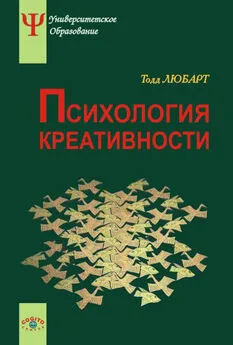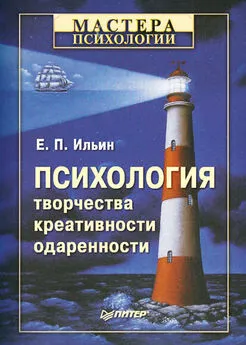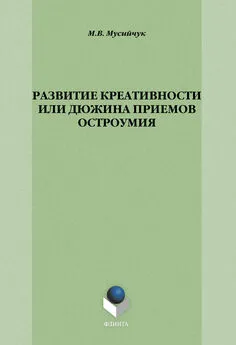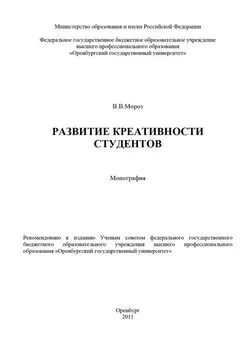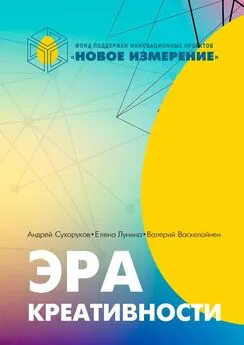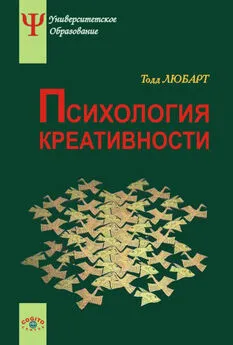Ф. Зенасни - Психология креативности
- Название:Психология креативности
- Автор:
- Жанр:
- Издательство:Литагент «Когито-Центр»881f530e-013a-102c-99a2-0288a49f2f10
- Год:2009
- Город:Москва
- ISBN:978-5-89353-221-0, 2-200-26284-1
- Рейтинг:
- Избранное:Добавить в избранное
-
Отзывы:
-
Ваша оценка:
Ф. Зенасни - Психология креативности краткое содержание
В учебном пособии, написанном коллективом авторов под руководством Тодда Аюбарта, дано систематическое изложение теоретических и практических вопросов креативности, или творческого мышления человека. Книга содержит сводку современных представлений о креативности, о творческом процессе и его развитии у детей и взрослых, о связи творческой способности с уровнем интеллекта, с личностными и эмоционально-волевыми качествами человека, а также с психопатологией. Значительное место посвящено проблеме измерения креативности. Подробно изложена модель эмоционального резонанса, выдвинутая Т. Аюбартом для объяснения механизмов влияния позитивных и негативных эмоций на креативное мышление.
Книга будет полезна студентам-психологам при изучении темы «Мышление» по курсу «Общая психология», а также как справочное пособие для всех, кого интересуют проблемы творчества.
Психология креативности - читать онлайн бесплатно ознакомительный отрывок
Интервал:
Закладка:
Bruce, R. (1989), «Creativity and instructional technology: Great potential, imperfectly studied», Contemporary Educational Psychology, 14, 241–256.
Burns, D. J., & Brady, J. (1992), «A cross-cultural comparison of the need for uniqueness in Malaysia and the United States», Journal of Social Psychology, 132(4), 487–495.
Busse, T. V., & Mansfield, R. S. (1980), «Theories of the creative process: A review and a perspective», Journal of Creative Behavior, 14(2), 91–103.
Calwelti, S. Rappoport, A., & Wood, B. (1992), «Modeling artistic creativity: An empirical study», Journal of Creative Behavior, 26, 83–94.
Carlier, M. (1973), Etude differentielle d'une modalite de la creativite: la flexibilite, Paris, Editions du CNRS.
Carlson, W. B. & Gorman M. E. (1992), «A cognitive framework to understand technological creativity: Bell, Edison, and the telephone», in Weber, Robert John & Perkins, David N. (Eds.), Inventive minds: Creativity in technology (p. 48–79), London, Oxford University Press.
Cliff ord, M. M. (1988), «Failure tolerance and academic risk taking in ten– to twelve-year-old students», British Journal of Educational Psychology, 58(1), 15–27.
Cliff ord, M. M., & Chou, F. C. (1991), «Effects of payoff and task context on academic risk taking», Journal of Educational Psychology, 83(4), 499–507.
Cohen, L. M. (1989), «A continuum of adaptive creative behaviors», Creativity Research Journal, 2(3), 169–183.
Cohen-Shalev, A. (1989), «Old age style: Developmental changes in creative production from a life-span perspective», Journal of Aging Studies, 3(1), 21–37.
Colligan, J. (1983), «Musical creativity and social rules in four cultures», Creative child and adult quarterly, 8(1), 39–47.
Comadena, M. E. (1984), «Brainstorming group: ambiguity tolerance, communication apprehension, task attraction, and individual productivity», Small group behavior, 15(2), 251–264.
Cox, C. M. (1926), Genetic studies of genius. The early mental traits of three hundred geniuses (Vol. 2), Stanford, Stanford University Press.
Cropley, A. J. (1997), «Fostering creativity in the classroom: General principles», in M. A. Runco (Ed.), The creativity research handbook (Vol. 1), Cresskill (NJ), Hampton Press.
Dabrowski, K. (1967), Personality-shaping through positive disintegration, Boston, Little Brown Co.
Dacey, J. S., & Lennon, K. H. (1998), Understanding creativity: The interplay of biological, psychological, and social factors, San Francisco, Jossey-Bass.
Damasio, A. R. (1994). Descartes’ error: Emotion, reason, and the human brain, New York, Putnam's Sons.
Daugherty, M. (1993), «Creativity and private speech: Developmental trends»,Creativity Research Journal, 6(3), 287–296.
Dougan, C. P., Schiff, E.& Welsh, L. (1949), «Originality ratings of department store display department personnel», Journal of Applied Psychology, 33, 31–35.
Doyle, C. L. (1998), «The writer tells: The creative process in the writing of literary fiction», Creativity Research Journal, 11(1), 29–37.
Dreistadt, R. O. Y. (1968), «An Analysis of the Use of Analogies and Metaphors in Science», Journal of Psychology, 68(1), 97–116.
Drevdahl, J. E., & Cattell, R. B. (1958), «Personality and creativity in artists and writers», Journal of Clinical Psychology, 14, 107–111.
Dudek, S. Z., Strobel, M. G., & Runco, M. A. (1993), «Cumulative and proximal influences on the social environment and children's creative potential», Journal of Genetic Psychology, 154(4), 487–499.
Dudek, S., & Cote, R. (1994), «Problem finding revisited», in Runco M. A. (ed.), Problem finding, problem solving, and creativity (p. 130–150), Norwood, NJ: Ablex.
Edwards, S. M. (2000–2001), «The technology paradox: Efficiency versus creativity», Creativity Research Journal, 13(2), 221–228.
Eindhoven, J. E., & Vinacke, W. E. (1952), «Creative processes in painting», Journal of General Psychology, 47, 165–179.
Einstein, A. & Infeld, L. (1938), The Evolution of Physics, New York, Simon and Schuster.
Eisenberg, J. (2002), «Does Individual Motivation and Creativity Predict Group Creative Performance? Yes, But with Some Surprises», Paper presented at the International WAM Meeting, July 2002, Lima, Peru.
Ekman, P. (1994), «Moods, emotions and traits», in P. Ekman & R. J. Davidson (eds.), The nature of emotions: Fundamental questions (p. 56–58), New York, Oxford University Press.
Ericsson, K. A. (1990), «The nature of exceptional performance», in D. L. Baltes & R. M. Lerner (Ed.), Life-span development and behavior (p. 187–217), Hillsdale (NJ), Erlbaum.
Ericsson, K. A., Krampe, R. T., & Tesch-Romer, C. (1993), «The role of deliberate practice in the acquisition of expert performance», Psychological Review, 100(3), 363–406.
Eysenck, H. J. (1995), Genius, Cambridge, Cambridge University Press.
Feist, G. J. (1998), «A meta-analysis of personality in scientific and artistic creativity», Personality and Social Psychology Review, 2(4), 290–309.
Feist, G. J. (1999), «Affect in artistic and scientific creativity», in S. W. Russ (ed.), Affect, creative experience and psychological adjustment (p. 93–108). Philadelphia, Taylor & Francis.
Feldhusen, J. F. (1995), «Creativity: A knowledge base, metacognitive skills, and personality factors», Journal of Creative Behavior, 29(4), 255–268.
Feldman, D. H., Csikszentmihalyi, M., & Gardner, H. (1994), Changing the world: A framework of the study of creativity, Westport (CT), Praeger.
Finke, R. A. (1990), Creative imagery: Discoveries and inventions in visualization, Hillsdale (NJ), England, Erlbaum. Finke, R. A., Ward, T. B., & Smi th, S. S. (1992), Creative cognition: Theory, research, and applications, Cambridge (MA), MIT Press.
Frensch, P. A., & Sternberg, R. J. (1989), «Expertise and intelligent thinking: When is it worse to know better?», in R. J. Sternberg (Ed.), Advances in the psychology of human intelligence (Vol. 5, p. 157–188). Hillsdale (NJ), Erlbaum.
Freud, S. (1908/1959), «Creative writers and day-dreaming», in J. Stratchey (ed.), Standard Edition of the Complete Psychological Works of Sigmund Freud (Vol. 9). London, Hogarth Press.
Frijda, N. (1994), «Varieties of affect: Emotions and episodes, moods and sentiments», in P. Ekman & R. J. Davidson (eds.), The nature of emotions: Fundemental questions (p. 59–67), New York, Oxford University Press.
Furnham, A. (1994), «A content, correlational and factor analytic study of four tolerance of ambiguity questionnaires», Personality and Individual Differences, 16(3), 403–410.
Gaines, R. & Price-Williams, D. (1990), «Dreams and imaginative processes in American and Balinese artists», Psychiatric Journal of the University of Ottawa, 15(2), 107–110.
Galton, F. (1879). «Psychometric experiments», Brain, 2, 148–162.
Galton, F. (1883), Inquiries into human faculty and its development, London, Macmillan.
Gardner, H. (1982), Art, mind, and brain, New York, Basic Books.
Gardner, H. (1988), «Creativity: An interdisciplinary perspective», Creativity Research Journal, 1, 8–26.
Gardner, H. (1993), Creating minds, New York, Basic Books.
Georgsdottir, A., & Lubart, T.I. (sous presse), «La flexibilite cognitive et la creativite», Psychologie Francaise.
Getz, I., & Lubart, T. I. (2000), «An emotional-experiential perspective on creative symbolic-metaphorical processes», Consciousness and Emotion, 1(2), 89–118.
Getz, I., & Lubart, T. I. (2001), «Psychologie, economie et creativite. Exploration de leurs interactions», Psychologie Frangaise, 46, 4, 365–378.
Getz, I., & Robinson, A. G. (2003), Vos idees changent tout, Paris, Editions d'Organisation.
Getzels, J., & Csikszentmihalyi, M. (1976), The creative vision: A longitudinal study of problem-finding in art, New York, Wiley-Interscience.
Ghiselin, B. (1963), «Ultimate criteria for two levels of creativity», in C. W. Taylor & F. Barron (Eds.), Scientific creativity: its recognition and development (p. 30–43), New York, Wiley.
Ghiselin, B. (1985), The creative process, Berkeley (CA), University of California Press.
Glover, J. A. (1979), «Levels of questions asked in interview and reading sessions by creative and relatively noncreative college students», Journal of Genetic Psychology, 135(1), 103–108.
Goldsmi th, R. E. (1987), «Creative level and creative style», British Journal of social psychology, 26(4), 317–323.
Goor, A., & Sommerfeld, R. E. (1975), «A comparison of problem-solving processes of creative students and noncreative students», Journal of Educational Psychology, 67(4), 495–505.
Gough, H. G. (1961), Techniques for identifying the creative research scientist, Conference on the Creative Person, Berkeley, University of California, Institute of Personality Assessment and Research.
Gough, H. G. (1979), «A creative personality scale for the adjective check list», Journal of Personality and Social Psychology, 37(8), 1398–1405.
Gough, H. G., & Gendre, F. (1982), Manuel de la Liste d'Adjectifs ACL, Paris, Editions du Centre de Psychologie Appliquee.
Gray, C. E. (1966), «A measurement of creativity in western civilization», American Anthropologist, 68, 1384–1417.
Gruber, H. E., & Dav is, S. N. (1988), «Inching our way up Mount Olympus: The evolving-systems approach to creative thinking», in R. J. Sternberg (Ed.), The nature of creativity (p. 243–270), New York, Cambridge University Press.
Guastello, S. J., Shissler, J., Driscoll, J., & Hyde, T. (1998), «Are some cognitive styles more creatively productive than others?», Journal of Creative Behavior, 32(2), 77–91.
Guilford, J. P. (1950), «Creativity», American Psychologist, 5, 444–454.
Guilford, J. P (1956), «Structure of intellect», Psychological Bulletin, 53, 267–293.
Guilford, J. P (1967), The nature of human intelligence, New York, McGraw-Hill.
Guilford, J. P (1968), Intelligence, creativity, and their educational implications, San Diego, (CA), Robert Knapp.
Guilford, J. P (1979), «Some incubated thoughts on incubation», Journal of Creative Behavior, 13(1), 1–8.
Guilford, J. P (1982), «Is some creative thinking irrational?», Journal of Creative Behavior, 16, 151–154.
Hadamard, J. (1945), An essay on the psychology of invention in the mathematical field, Princeton (NJ), Princeton University Press.
Harrington, D. M. (1999), «Conditions and settings/environment», in M. A. Runco & S. R. Pritsker (eds.), Encyclopaedia of creativity (Vol. 1, p. 323–340), New York, Academic Press.
Harrington, D. M., Block, J., & Block, J. H. (1983), «Predicting creativity in preadolescence from divergent thinking in early childhood», Journal of Personality and Social Psychology, 45(3), 609–623.
Harrington, D. M., Block, J., & Block, J. H. (1987), «Testing aspects of Carl Rogers's theory of creative environments: Child-rearing antecedents of creative potential in young adolescents», Journal of Personality and Social Psychology, 52(4), 851–856.
Hayes, J. R. (1989), «Cognitive processes in creativity», in J. A. Glover, & C. R. Reynolds (Ed.), Handbook of creativity (p. 135–146), New York, Plenum.
Hennessey, B. A., Amabile, T. M., & Martinage, M. (1989), «Immunizing children against the negative effects of reward», Contemporary Educational Psychology, 14, 212–227.
Heston, R. W. (1966), «Psychiatric disorders in foster-home reared children of schizophrenic mothers», British Journal of Psychiatry, 112, 819–825.
Hilgard, E. R. (1980). «The trilogy of mind: Cognition, affection, and conation», Journal of the History of the Behavioral Sciences, 16, 107–117.
Читать дальшеИнтервал:
Закладка:
